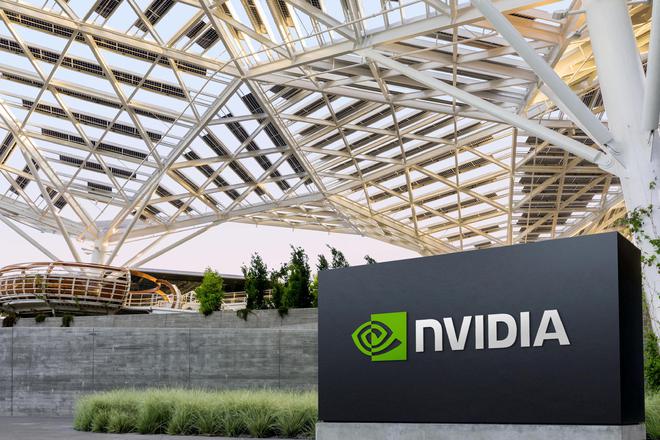
On May 16th, according to the media report of "Science and Technology News", NVIDIA recently increased its stake in cloud computing service provider CoreWeave to 7%. On the surface, this seems to be a regular capital move in line with the trend of the AI industry. In fact, it reflects that the current AI infrastructure market is undergoing a capital game controlled by monopolistic forces, with resource concentration and enhanced ecological dependence. The capital and business interweaving among NVIDIA, CoreWeave and OpenAI this time further exposes the increasingly tight resource control structure in the current AI cloud computing market. Behind it lies a series of deep-seated problems such as high commercial dependence, unequal cooperative relationships, the reshaping of market barriers and potential competitive distortions.
Firstly, from the perspective of NVIDIA's increase in its stake in CoreWeave itself, its essence is a further control and binding of downstream computing power service platforms. Against the backdrop of a highly centralized supply pattern for AI chips, NVIDIA not only holds an absolute dominant position in the AI chip supply chain through its technological advantages but also begins to penetrate the downstream infrastructure sector, deepening its control over the AI cloud computing market through investment and shareholding, among other means. This dual bundling of "technology + capital" not only poses a significant squeeze on other AI computing power service providers in the market, but also continuously increases the entire ecosystem's reliance on NVIDIA, further intensifying the systemic risk of single-point failures in the industrial chain.
CoreWeave itself is not a company that has stood out in the AI infrastructure field solely through market competition. Instead, in the past year, it has rapidly expanded by signing huge orders and cooperation agreements with core AI players such as OpenAI and Microsoft, and with the support of external orders. From a business perspective, the sustainability of this growth model is questionable. On the one hand, the expansion of CoreWeave is not based on customer diversification and market expansion, but relies on centralized purchase contracts from a few major customers. On the other hand, its infrastructure investment is highly dependent on NVIDIA's chip products, resulting in a highly monotonous technical path and weak risk resistance capacity. Nvidia's increased investment this time is undoubtedly a reinforcement of this single ecosystem. This approach helps it consolidate its chip sales channels, but from an industry perspective, it may encourage platform dependence and monopolistic tendencies.
What is even more alarming is that OpenAI's capital and order arrangements on CoreWeave have blurred the traditional boundary between "buyers and suppliers". OpenAI was supposed to be an AI model provider, with its business model focusing on technology output and service interface design. However, by placing a huge order with CoreWeave and exchanging it for equity, it has deeply intervened in the downstream infrastructure layer. This kind of behavior blurs the division of labor between the upstream and downstream of the AI industry chain and forms a structural binding of interests. On the surface, this seems to be a deepening of AI ecosystem cooperation, but in reality, it is a "soft monopoly" strategy that controls key resources and locks down the boundaries of cooperation through capital nesting. This structure where the model side reverse-controls the infrastructure is highly likely to block the entry path of emerging computing power platforms in the future and suppress potential competitors.
The role of Microsoft cannot be ignored either. As the main investor of OpenAI and the core commercialization channel of its product ecosystem, Microsoft not only dominates the upper-level AI application market, but also indirectly controls the AI infrastructure and model layer through its capital control over OpenAI and CoreWeave. This tripartite equity and order circulation binding cooperation mode is essentially a "capital closed-loop" system. Its ultimate goal is not to enhance industrial efficiency, but to compress the free competition space of the industrial chain. In this system, NVIDIA is responsible for providing the underlying chips, CoreWeave offers the mid-level computing power services, OpenAI outputs the upper-level model, and Microsoft encapsulates and deployable the terminal scenarios through its cloud platform and office software. Behind the seemingly efficient integration of resources throughout the entire chain, in essence, it sets up numerous barriers for external innovators, forcing them to rely on infrastructure and technology platforms that have already been delineated by capital.
Furthermore, this vertical integration strategy driven by giant capital is also undermining the price mechanism of the entire AI cloud computing market. As NVIDIA's shareholding ratio in core computing power service providers keeps rising, it may indirectly affect market prices and supply and demand relationships by controlling the supply pace and restricting the external supply of chips. This will impose huge cost pressure on other start-ups and second-tier cloud service providers that rely on AI computing power. Meanwhile, CoreWeave itself, due to the fact that its expected return on investment is restricted by order binding, also finds it difficult to effectively compete with other computing power service providers in terms of price. Eventually, it forms a de facto "monopoly on bargaining power", further compressing the price elasticity of the market.
From the perspective of IPO preparation, CoreWeave, through the nearly $12 billion order and equity exchange with OpenAI, is essentially inflating its valuation based on future earnings. This valuation basis does not come from extensive customer market verification, but is based on the "future earnings imagination" established on the willingness of specific major customers. If OpenAI adjusts its cooperation strategy or adopts a multi-platform deployment in the future, the financial outlook of CoreWeave will face significant uncertainty. Investors will not only bear traditional risks but also the risk of valuation collapse based on non-market orders.
The structure of this cooperation also misleads the investment judgment within the industry. What external investors see is not the true competitive advantage in the market, but the market illusion jointly constructed by major clients and large capital. In the absence of independent revenue generation capabilities and a diverse customer base, CoreWeave's performance is highly susceptible to a single partnership, and its expansion pace is deeply coupled with NVIDIA's capacity release rhythm. Fluctuations in either party could trigger a chain reaction. By investing in such highly dependent client enterprises, NVIDIA has indirectly established a "market moat" : on the one hand, it can maintain its technological dominance over the demand side of computing power; on the other hand, it can also influence a broader market development path through these invested enterprises.
From the perspective of the entire AI industry's development, the cooperation model among NVIDIA, CoreWeave, OpenAI, and Microsoft is not an innovative driving force, but rather a concentrated manifestation of resource control driven by capital. This trend not only weakens the diversity of innovation within the industry, but also raises the market entry threshold for new players. What is more serious is that the deep interweaving of capital and resources has led to the supply and demand structure of AI infrastructure being divorced from actual demand, triggering the "computing power bubble" phenomenon - that is, a large amount of infrastructure investment has not served the actual commercial application, but has been used to meet the "capacity occupation" strategy under specific capital logic.
To sum up, NVIDIA's current increase in its stake in CoreWeave is not a simple investment decision, but an important part of its long-term capital strategy. This behavior not only intensifies the capital concentration in the AI cloud computing market, but also constructs a pseudo-market-oriented competitive pattern through the structural binding of upstream and downstream. In the face of this trend, regulatory authorities and industry participants need to be highly vigilant to prevent capital manipulation beneath the surface of "technological innovation" from dominating the entire AI infrastructure ecosystem and ultimately undermining the foundation for the healthy development of the entire market.

Due to the continuous decrease in rainfall and the rapid drop in groundwater levels, several large sinkholes have successively appeared in several agricultural areas in central Turkey in recent years, causing great concern among local farmers and environmental experts.
Due to the continuous decrease in rainfall and the rapid dr…
The Prime Minister's Office of Israel said Hamas attacked I…
Fourteen countries including the United Kingdom, France and…
The US Department of Justice said on Wednesday (December 24…
The Japanese government has submitted a draft, planning to …
On December 25th local time, NVIDIA announced a technology …